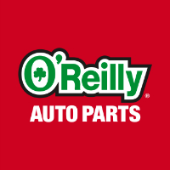-
Welcome to Auto Parts Forum
Whether you are a veteran automotive parts guru or just someone looking for some quick auto parts advice, register today and start a new topic in our forum. Registration is free and you can even sign up with social network platforms such as Facebook, X, and LinkedIn.
BBK Performance: Power Plus Throttle Body and Cold Air Intake Kit
-
Similar Content
-
- 0 replies
- 34 views
-
- 0 replies
- 18 views
-
- 0 replies
- 19 views
-
- 0 replies
- 40 views
-
- 0 replies
- 20 views
-
-
Similar Topics
-
By Dorman Products
Cost-effective replacement intake manifold for Ford Coyote 5.0s | Dorman OE FIX 615-916
-
By NAPA
Christian Eckes took the NASCAR CRAFTSMAN Truck Series points lead on Friday night with a stout fourth-place performance at Texas Motor Speedway. The driver of the No. 19 Gates Hydraulics Chevrolet Silverado RST captured his third top-five finish of the season and scored 50 points on the night, the second-most of all drivers in the field. Eckes led 31 laps, the only driver to have led laps in each race this season, and tallied his third top-five finish in the last four events.
For the second-consecutive weekend, Eckes qualified on the front row and was a mainstay in the top five for the entire event. He settled into second at the drop of the green flag and challenged for the lead near the midway point of the opening stage. The first lead change of the night occurred when Eckes powered his Gates Hydraulics Chevy to the lead on lap 17 and paced the field for 21 circuits. He surrendered the lead on lap 38 and collected nine points at the end of Stage 1 on lap 40 while running second.
Crew chief Charles Denike brought Eckes to pit road under the stage caution for four fresh tires, fuel, and a minor air pressure adjustment to tighten his balance. Eckes restarted second on lap 47 and maintained position inside the top five for the ensuing 35-lap run. An improved handling balance and consistent lap times netted Eckes another eight points at the end of Stage 2 on lap 80 by running in third position.
Eckes was armed with another batch of fresh tires, fuel, and minor adjustments to fine-tune the handling during the second stage caution. After restarting third on lap 87, he waged war for the runner-up position and gained control of it by lap 100. He ran there until a cycle of green flag pit stops began on lap 119. Eckes made his final stop on lap 129 just before a caution waved. He was able to stay on the lead lap in fourth position and in contention for the victory. He made another fierce run for the race lead on a lap 150 and led until lap 158. During the final 10 laps, Eckes fought valiantly for one final charge at the lead but took the checkered flag in fourth position for his third top-five and sixth top-10 of the season.
“Not a bad points night,” Eckes said. “I thought we’d have a pretty good shot at the win there, but just went down into Turns 1 and 2 and got way too tight and slid up the racetrack. It is what it is. I’m proud of the No. 19 Gates Hydraulics team for making the improvements that they did. Our mile-and-a-half stuff has definitely shown a little bit of an improvement. We still have a little bit of a ways to go, but we’ll see how it goes.”
Start / Finish: 2 / 4
Points Standing / Total: 1 / 287 pts. (+2)
Next Race: Saturday, May 4, Kansas Speedway
How to Watch or Listen: 8:00 p.m. ET on FS1, MRN or SiriusXM
NAPA:
link hidden, please login to view
Christian Eckes: link hidden, please login to view
Bill McAnally Racing / McAnally-Hilgemann Racing: link hidden, please login to view The post
link hidden, please login to view appeared first on link hidden, please login to view.
link hidden, please login to view 
-




Recommended Posts
Join the conversation
You can post now and register later. If you have an account, sign in now to post with your account.
Note: Your post will require moderator approval before it will be visible.